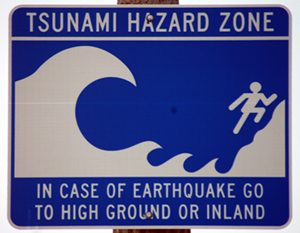 |
GEOL 31 - Physical Oceanography
Exam # 3 Study Guide - Fall 2017
exam date: Monday, November 20, 2017
Professor: Dr. Alessandro Grippo, Ph.D.
|
|
| |
| General Information | Last Updated • November 10, 2017 | |
PLEASE NOTE:
- You CAN NOT USE any electronic device during the test. That includes cellular phones, iPods, iPads, Kindles of any kind, Blackberries, Bluetooth, headphones, computers, pocket calculators, translators or, in general, ANY KIND of electronic device.
If you still have one or more electronic devices with you at the moment you are taking the test, they MUST BE TURNED OFF: if a cell phone rings, or if a device is left on during test time, you will not be allowed to finish your test, your results will be invalidated and you will be reported to the college for disciplinary action.
- You can not use any text, notes, dictionary, pocket calculator, flash card, or any other source of information than your brain. If you do, you will not be allowed to finish your test, your results will be invalidated and you will be reported to the college for disciplinary action.
- You will NOT need a ruler or a blue book for this test.
- You will ONLY need to bring:
- one Scantron, Form 882-E
- a number 2 pencil
- an eraser
- This study guide must be interpreted (literally) as a guide to the study of the subject and not as a listing of possible questions.
- On this study guide, there is no additional or extra information compared to what has been said, discussed, shown, illustrated in class.
- It is YOUR personal responsibility to cover the materials listed below on the lecture textbook, on the lab textbook, on "Cradle of Life", on the web pages, and on your notes.
- I would strongly recommend that you integrate your notes with the textbook materials for completeness of information: some information that has been detailed in class is only mentioned briefly on the textbook, and you are responsible for covering that.
- Know what the key terms and the concepts are (see "Concept Check" and "Essential Concept" at the end of each chapter on your textbook); exercise with the questions for review also found at the end of each chapter. Read the summary ("Essential Concepts Review") at the end of each chapter. Try to work with other fellow students if you find it useful.
- Never hesitate to ask questions in class.
 A tsunami warning sign in Santa Monica, California.
© Alessandro Grippo
| |
| Study Guide | Last Updated • November 10, 2017 | |
For a better grasp of the materials:
- Check the "essential Learning Concepts" at the beginning of each chapter
- Review the "Concept Check" section at the end of each paragraph
- Look up the "Recap" definitions at the end of each paragraph
- Review "SmartFigures" when indicated in the textbook
- Go over the "Essential Concepts Review" section at the end of each chapter
Chapter 6 - Air-Sea Interaction
Study the whole chapter
- Know the Introduction
- Know What Causes Variations in Solar Radiation on Earth?
Pay attention to figures 6.2, page 172; 6.3, page 174
- Know What Physical Properties Does the Atmosphere Possess?
Pay attention to figures 6.6, page 176; 6.8, page 177
- Know How Does the Coriolis Effect Influence Moving Objects?
Pay attention to figures 6.11, page 180; 6.12 , page 182
- Know What Global Atmospheric Circulation Patterns Exist?
- Know How Does the Ocean Influence Global Weather Phenomena and Climate Patterns?
- Know How Do Sea Ice and Icebergs Form?
- Know Can Power from Wind Be Harnessed as a Source of Energy?
Chapter 7 - Ocean Circulation
Study the whole chapter
- Know the Introduction
- Know How Are Ocean Currents Measured?
- Know What Creates Ocean Surface Currents and How Are They Organized?
Pay attention to figure 7.4, page 212; 7.5, page 213; 7.7, page 215; 7.8, page 217
Know the name of the currents (table 7.1, page 213); know the characteristics of boundary currents in detail (table 7.2, page 218)
- Know What Causes Upwelling and Downwelling?
Pay attention to figure 7.12, page 221
- Know What Are the Main Surface Circulation Patterns in Each Ocean Basin?
Be sure to study all the of the world's oceans patterns
- Know How Do Deep-Ocean Currents Form?
Pay attention to figure 7.27, page 236; 7.28, page 237; 7.29, page 238
- Know Can Power from Currents Be Harnessed as a Source of Energy?
Chapter 8 - Waves and Water Dynamics
This chapter has been covered in class, but it will not be on this test. It will be on test #4
Chapter 9 - Tides
Study the whole chapter
- Know the Introduction
- Know What Causes Oceane Tides?
Be sure to study all the subparagraphs.
Pay attention, in particular, to Figures 9.7, 9.8, and 9.9, all on page 283.
- Know How Do Tides Vary During a Monthly Tidal Cycle?
Be sure to study all the subparagraphs.
Study Figure 9.11, page 286, Figure 9.12, page 287, Figures 9.13 and 9.14, page 288, and, very important, Figure 9.16, page 290.
- Know What Do Tides Look Like in the Ocean?
Be sure to study all the subparagraphs.
- Know What Types of Tidal Patterns Exist?
Know all of these patterns well, and review them in Figures 9.1 and 9.19, page 293.
- Know What Tidal Phenomena Occur in Coastal Regions?
- Know Can Tidal Power Be Harnessed as a Source of Energy?
Go back to the home page  Go back to the Fall 2017 page
Go back to the Fall 2017 page
|
|
|
| |
Copyright © since 1994, Alessandro Grippo, All Rights Reserved.
|


 Go back to the Fall 2017 page
Go back to the Fall 2017 page